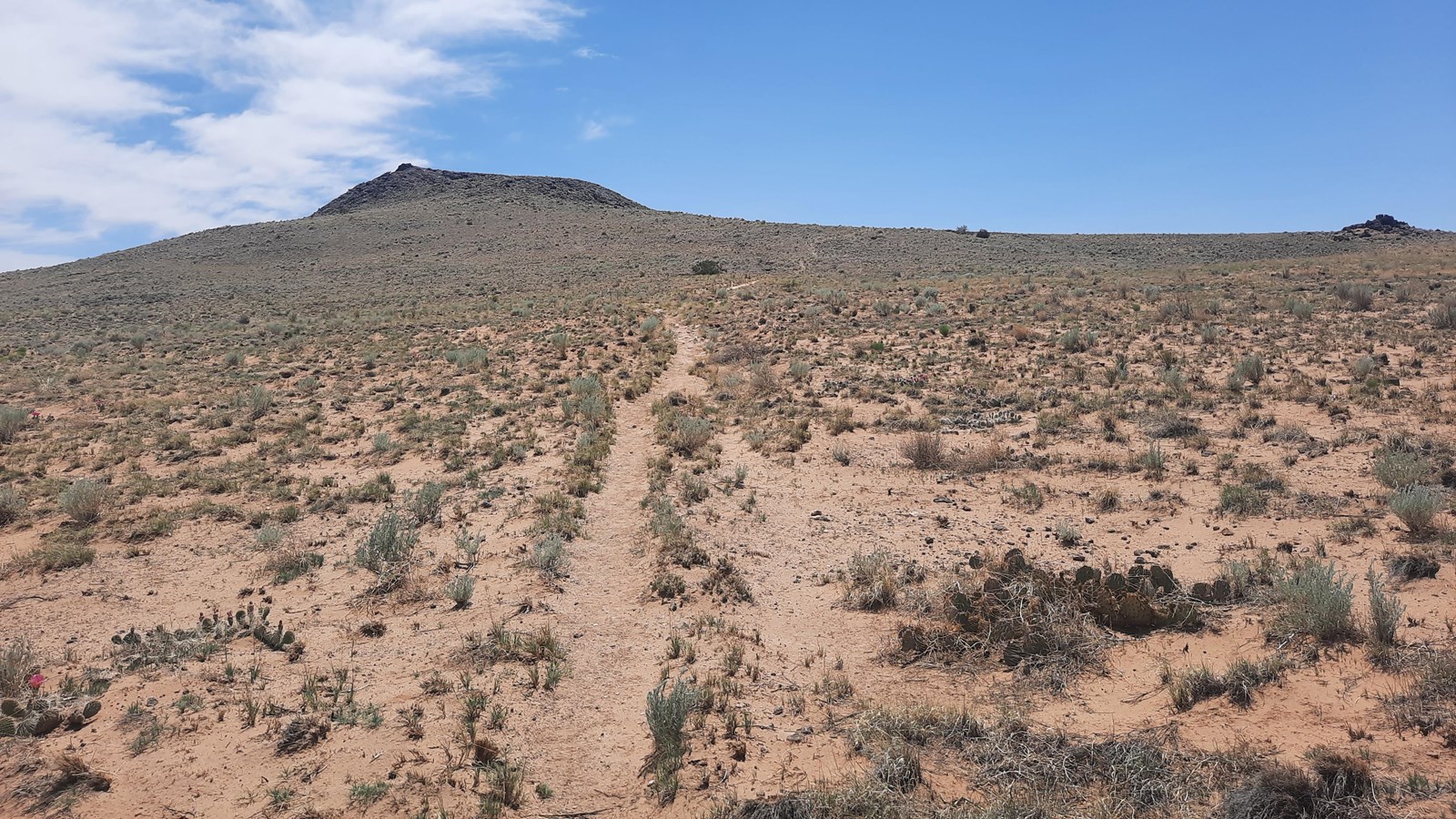Last updated: July 15, 2025
Place
Volcanoes Day Use Area Audio Tour Stop 12

NPS Photo / Ben Holt
Cellular Signal
You have now reached stop 12 of the Volcanoes Day Use Area audio tour. You have walked 3.47 miles or 5.58 kilometers.
New Mexico is known as the volcano state and every type of volcano can be found in this state. If you recall from stop 6, we talked about the gentle fissure eruption that resulted in the spatter cones and escarpment. But, to the west, you can see an example of a different type of volcano. Mount Taylor is an example of a composite volcano or stratovolcano; an explosive eruption of alternating ash and lava flows which accumulated to form a large cone shaped mountain. Mt. Taylor was last active 3 million to 1.5 million years ago and is roughly 15 times older than these spatter cones. In contrast to the gentle eruptions at Petroglyph, Mt. Taylor blew its top off in a violent explosion. While Mt. Taylor currently stands just over 11,000 feet, geologists estimate that its last major eruption blew nearly 2,000 feet of rock off of its original height. More famous examples of stratovolcanoes include Mt. Saint Helens in Washington State, Mt Vesuvius by Naples, Italy, and Krakatoa in Indonesia.
Continue another 0.34 miles or 0.55 kilometers to reach the final audio tour stop on the saddle of Vulcan.
